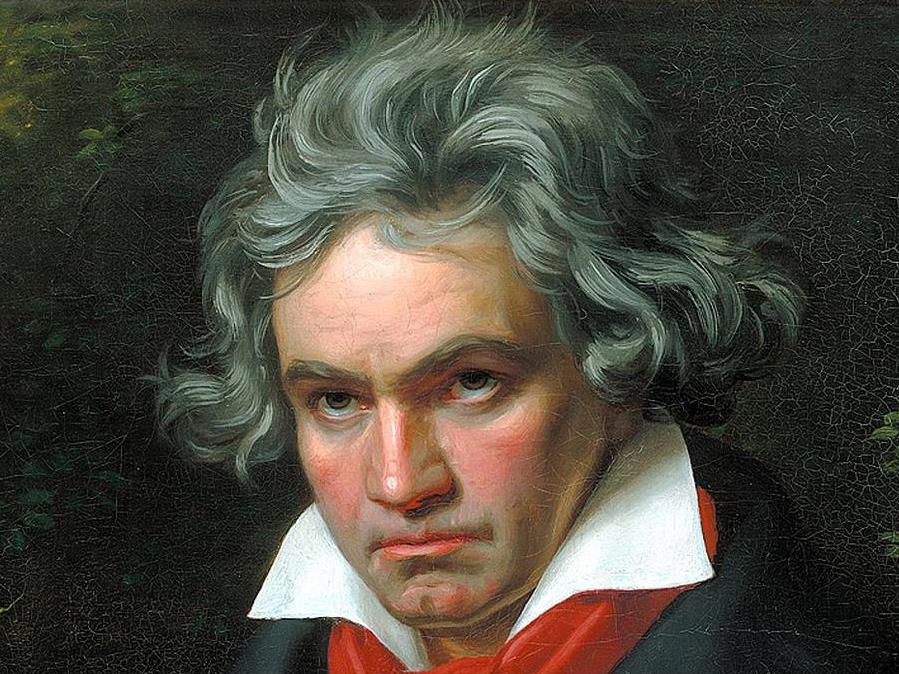Ludwig van Beethoven by Joseph Karl Stieler, 1820. Image via Wikimedia Commons.
Basically Beethoven ‘2’, the final tour for 2015 in the Selby & Friends chamber music series, concentrated completely on the music of Ludwig van Beethoven. More specifically it was a comprehensive snapshot of just over two decades from the composer’s middle compositional period.
As referred to during an interesting pre-concert talk by Kathryn Selby, and elaborated upon in the detailed program notes, this same snapshot outlined Beethoven’s musical, social, professional life and business acumen from the years 1790 to 1812.
The featured compositions and their method of writing and editing showed us the relationships Beethoven forged with fellow violinists, cellists, patrons and publishers to ensure his new works for cello and piano, violin and piano and piano trio received decent premieres and scores were readily available for performances to continue.
Celebrated chamber musician Kathryn Selby was joined by two fine orchestral and chamber musicians to demonstrate the successful fruits of Beethoven’s writing and editing process. The well nuanced and technically stunning performances were highly suitable examples of Beethoven’s proud workmanship and original string sonata or piano trio style.
The committed, superbly balanced playing was full of Beethoven-style idiosyncrasies of expression as Selby’s fine pianism managed contrasts in character, tone colour, accent, rhythm and form as well as equally successful shifts between bold bravura and some exquisite super-soft delicacy. These qualities were keenly matched in the playing of violinist Dale Barltrop and Timo-Veikko Valve on cello.
The program began with the earliest music of the concert, the Allegretto movement from Piano Trio No 12 (1790). This short movement was played with brilliant blend and fine passing of musical interest between the players. Such support in a chamber music sense continued to be successful in the remaining sonata and trio textures to be heard.
Dale Barltrop’s enthusiastic spoken introduction to the Sonata for Violin and Piano No 10 in G major Op 96 (1812) translated beautifully into the focussed sonorities of his interpretation of this work. Originally written for Pierre Rode to debut, the emphasis is on more dreamy, sustained violin playing rather than a constant punctation by virtuosic passages. This was done to suit the failing technique of Rode, and in this concert event was a beautifully exploited soundscape by Selby and Baltrop.
Having said the above however, the extended lyricism and beautiful treatment of melodic line by Selby and Baltrop was contrasted with an exciting fourth-movement finale, in which Beethoven brings the work home and pushes the pianist and string player hard, with brief but stunning bravura passages. We were treated to a thrilling flourish to end this work’s undulating dialogue and expansive motifs.
Timo-Veikko Valve was also technically astounding in his presentation of the Sonata for Cello and Piano No 3 in A major, Op 69, composed just four years earlier than the violin sonata previously heard.
Once again the interplay between the piano and string soloist was first rate. The cello stopping effects in the first movement ‘Allegro ma non tanto’ were quite breathtaking. Less dramatic, more cantabile moments from both instruments resounded with contrasted tone colours about the venue. The relentless and unique syncopations required throughout the middle ‘Scherzo: Allegro molto’ movement had brilliant drive and forward momentum.
Following interval, to conclude a concert where Kathryn Selby had already performed in trio format and with each individual string player, we were treated to a version of the mighty Piano Trio in B Flat major Op 97 “Archduke” (1811). This popular example of the trio genre also was a jewel in the crown of this concert’s musicological concerns, with an insight into Beethoven’s life and method of writing.
As played by these musicians, the piece perfectly illustrated Beethoven’s ability to further enhance his output of popular works dedicated to his patron the Archduke Rudolph. Beethoven’s social and musical interaction with fellow musicians resulted in yet more fine writing for all instruments to show the capabilities of the trio genre he constantly learnt about from contemporaries and drew on features of his own piano playing.
The players in this concert ensured the architecture of this famous trio was kept secure. Tempo choices were very suitable and the elevated ensemble playing ended a rewarding concert with a sublime version of this classic in the trio genre. As advertised, this ‘Archduke Trio’ and as advertised, the final 2015 concert was “chamber music at its best”
The Basically Beethoven ‘2’ tour concludes on 29 November; see selbyandfriends.com.au for details.
Selby & Friends – Basically Beethoven ‘2’
City Recital Hall, Angel Place, Sydney
24 November 2015





